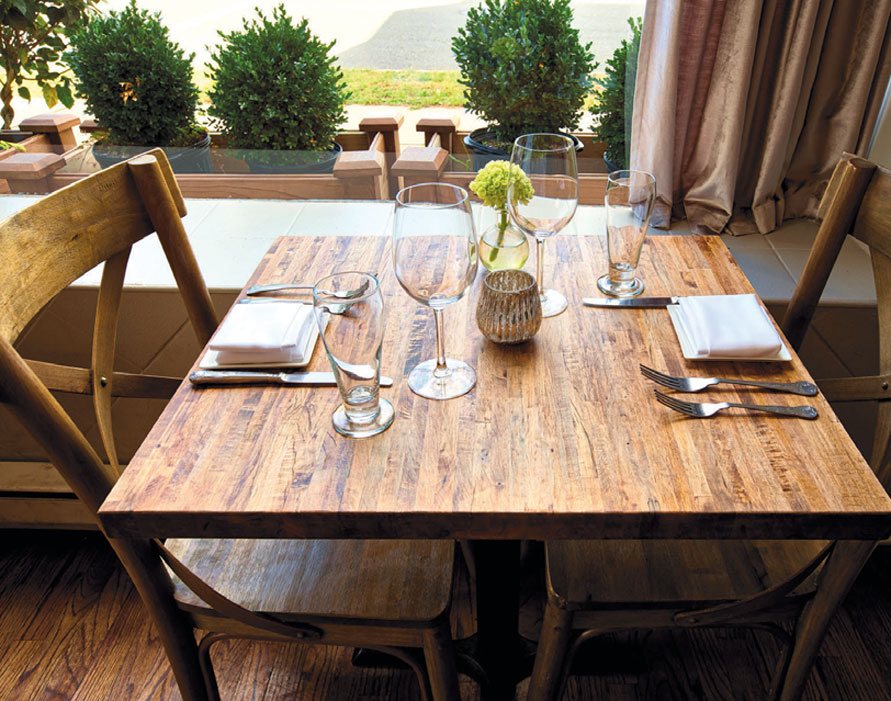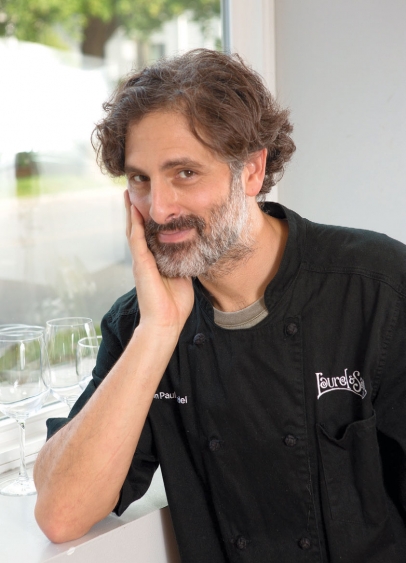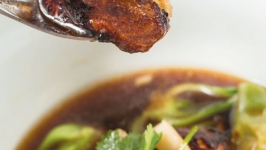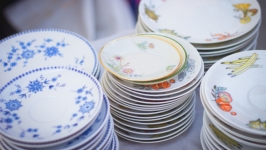Kombu Mushroom Consomme’ at Laurel & Sage
CHEF: SHAWN DALZIEL
RESTAURANT: LAUREL & SAGE
LOCATION: MONTCLAIR
The aroma of consommé has the power to transport Shawn Dalziel through time and space—taking the chef/owner of Laurel & Sage in Montclair back to his early days as a cook in San Francisco. Culinary school happened there. So, too, did his first job as a line cook. That aroma brings to mind his nightly bike ride from restaurant kitchens up the steep hill to his apartment at the top of Geary Street. And the year and a half he spent at Aqua, the highly acclaimed seafood restaurant, perfecting the art of making kombu mushroom consommé—a deep, rich, highly flavored Asian-style clarified, fortified stock.
Kombu mushroom consommé begins with a rich chicken stock. To make great stock, Dalziel notes, you can’t skimp on ingredients. That means you need a lot of chicken bones. “You don’t want to get controlled by having too little ingredients. That happens a lot at home,” he says. “That little bird that you get for protein is not going to be enough bones. You really have to have enough ingredients. You can’t go light.”
Dalziel saves chicken bones in the freezer until he has enough to make stock. He also notes that companies such as Restaurant Depot sell chicken bones inexpensively in bulk. He recommends roasting the bones to add extra richness, but says that this step is not essential with this consommé.
The step that is essential to getting deep color and rich flavor is to infuse that chicken stock with “mulch”—the dry, crumbly mass that results from the long, slow roasting of carrots, celery, onions and mushrooms. The process of making mulch begins with pureeing rough-chopped vegetables with just enough white wine to get them to blend to a coarse puree. That puree is then spread in a deep-sided roasting pan and is slow roasted for hours until it resembles black, crumbly garden mulch and has been reduced to about one-quarter of its original volume. Constant stirring, patience and nerve are key.
“It has to keep going until it is the right dryness. It looks like it’s burned, but it’s not,” Dalziel says. “When it is cooled down, you can reach in the pan and pick it up with your hand and it should be dry, just like mulch. It’s earthy and it has a nice acidity to it, too. And it smells amazing.”
After the chicken stock has been well-strained, the mulch is added. That mixture is then simmered until it’s reduced by half, further intensifying the flavor and color. “That’s really the backbone of this consommé,” Dalziel says. “You not only get a clarified, fortified stock, but one that is very dark in color, almost black.” After straining again, the stock is ready to be clarified.
Clarification removes any particulate matter and fat that remain in the stock. The process is accomplished by adding a “raft” made of egg whites. The particulate matter and fat adhere to the raft, leaving behind a clear stock—a culinary alchemy that Dalziel calls “a magical moment.”
For a simpler home version of this dish, Dalziel suggests adding noodles and baby bok choy to the consommé and then topping it with a piece of cooked fish.
The trick—and this process is definitely tricky—is to get the right ratio of raft to stock. Dalziel defines that ratio as at least one-third raft to two-thirds stock. If your first attempt doesn’t succeed, you repeat the process, or just use the stock as is. In fact, as clarification is mostly about aesthetics, not flavor, you can even skip this step entirely.
At Laurel & Sage, this consommé forms the foundation for Ginger-Soy Lacquered Chilean Sea Bass with Lobster Tortellini, Hon Shimeji Ceviche, and Kombu Mushroom Consommé—a popular entree on the restaurant’s fall-winter menu. In this dish, house-made tortellini stuffed with lobster, mascarpone, basil and lemon is topped with a piece of Chilean sea bass that has been lightly poached in a ginger-soy infusion and then roasted. Hot consommé is ladled over the dish, which is then topped with pickled mushrooms.
For a simpler home version of this dish, Dalziel suggests adding noodles and baby bok choy to the consommé and then topping it with a piece of cooked fish. He says Chilean sea bass is ideal because its high fat content allows it to be cooked for a long time without drying out. Or the consommé can be eaten just with noodles.
“It’s a lovely winter-fall thing when it is starting to get cold. This is essentially chicken noodle soup, but it’s got a ton of mushrooms in there and some other Asian flavors with the bonito flakes and kombu,” Dalziel says. As for the time involved in making the dish, he advises home cooks to make as big a pot of chicken stock as possible and freeze the portion that isn’t going to be used immediately. “Make a bigger batch!” he says. “Buy a case of chicken bones and make stock; save some for chicken soup and save some to make the consommé. You could do a little project and have some nice food.”
LAUREL & SAGE
33 Walnut St.
Montclair
973.783.1133
aurelandsage.com










